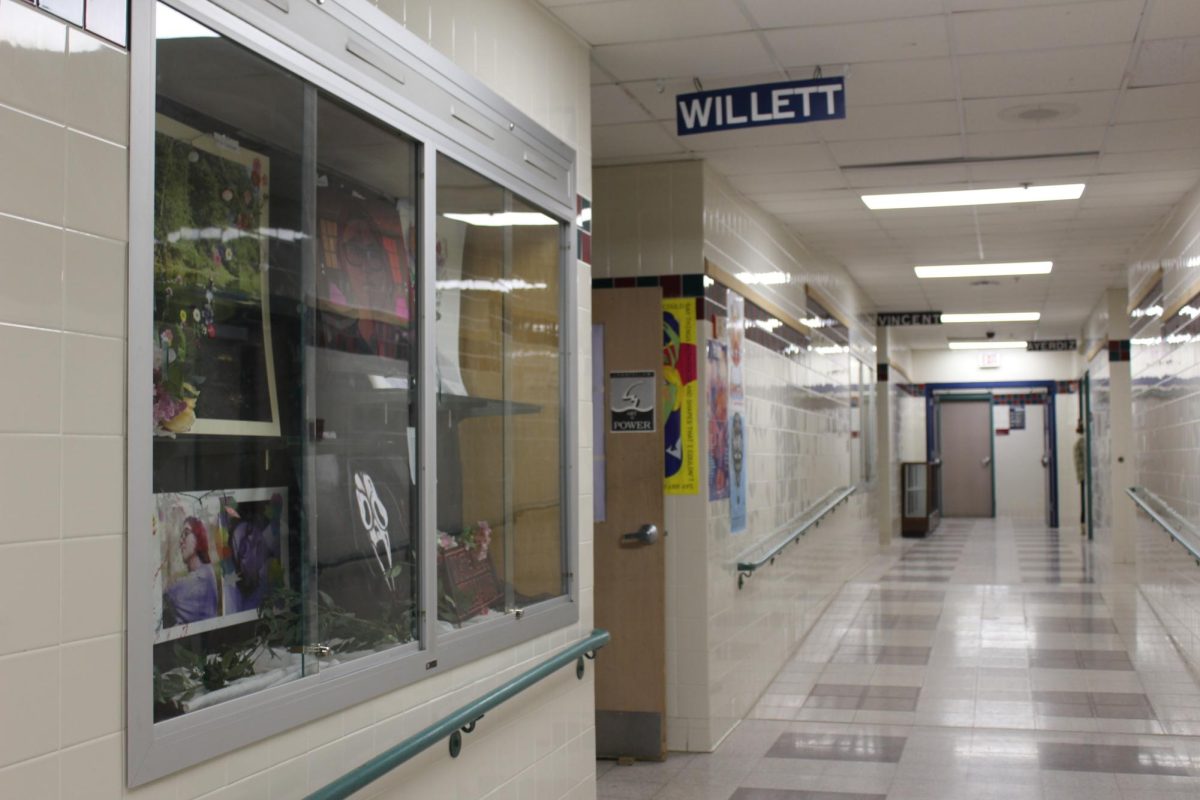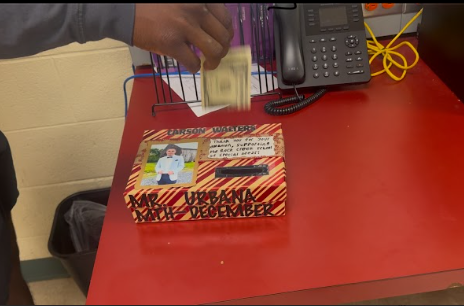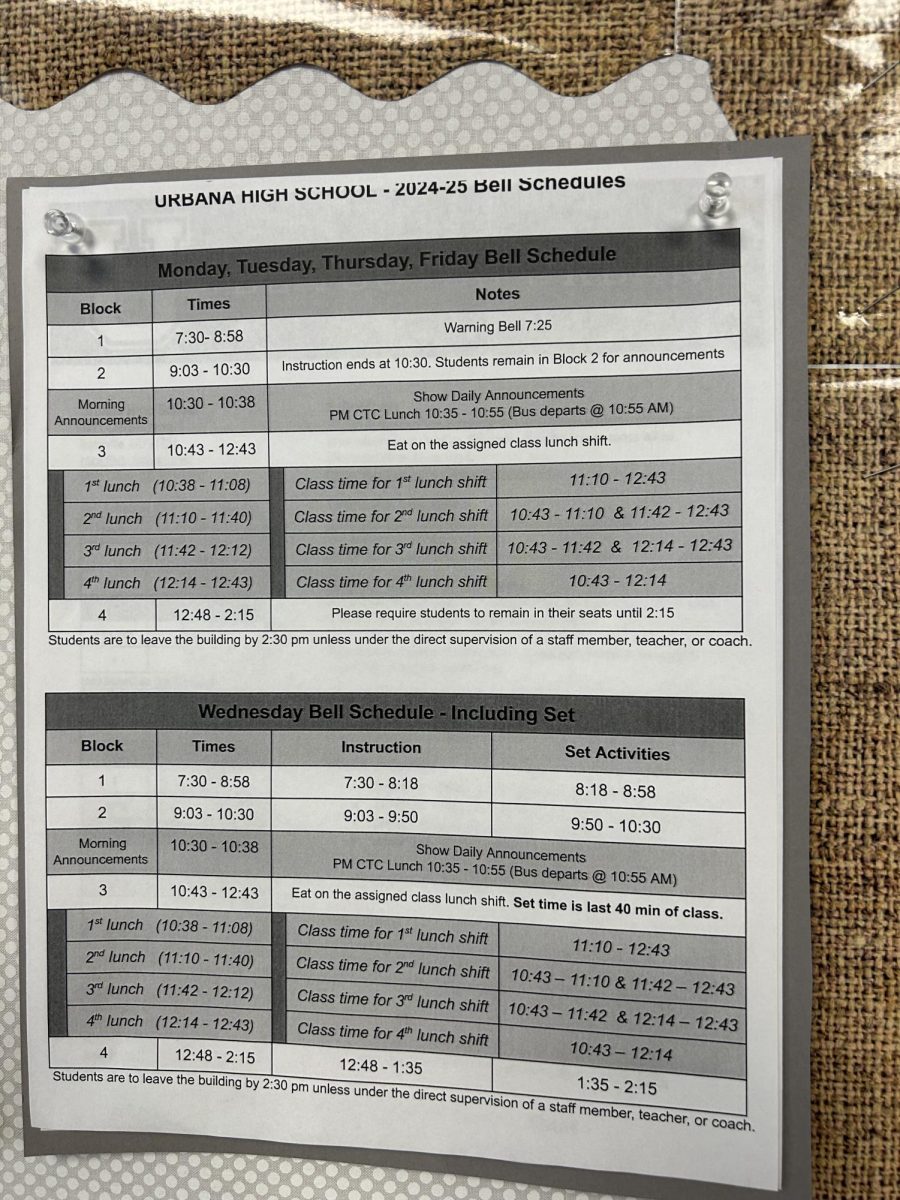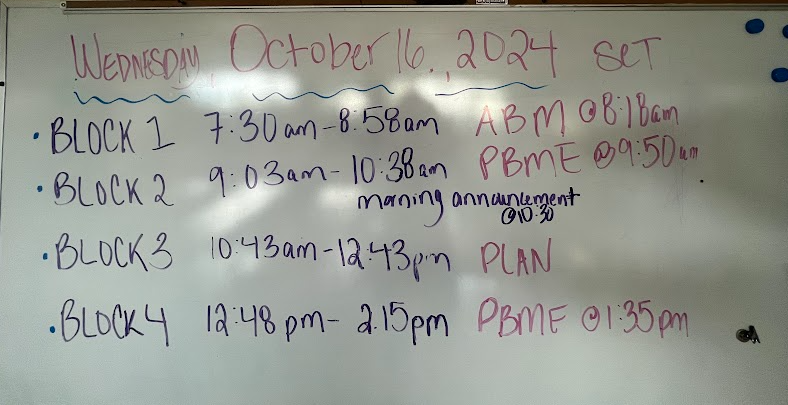When entering high school, students find out whether they prefer 4 classes or 8 during their school day. Off the dome, many would choose 4 classes, but is it really better?
Students’ schedules vary based on what their county has set for their high schools. This doesn’t mean that students do not have a preference. An 8 period day and a 4 block schedule offer distinct advantages and disadvantages.
Which one is best for current students?
Advantages of block scheduling
There are many advantages of a block schedule. One that stands out above others is that it help students maintain less homework because there is far more time in class to finish it.
Block scheduling also helps students prepare for college, as most classes in college are between one to two hours with even heavier workloads.
Longer blocks also give students a better chance to get more involved in their work, as they have more time to learn hands-on which is more beneficial in the long run.
Disadvantages of block scheduling
One of the disadvantages of block scheduling is the 90 minutes of class. The extended time often tests one’s attention span.
Teacher and student fatigue is a disadvantage too; students become tired of seeing the same people repeatedly each day for 25% of their school day.
Some students benefit from having their core classes year round. The way FCPS does its 4×4 block schedule, students typically go 8 months before they take the next level in their academic courses. This large gap can hinder retention between courses.
Advantages of an 8-period schedule
Many students enjoy the balance and variety when offered an 8-period schedule.
Using all skills and subjects everyday actively helps the brain retain knowledge for a longer period. This schedule creates a great balance of the subjects involved, while offering variety to students as well. This gives students the opportunity to commit to the whole 45-minute class.
This can make students feel less overwhelmed and more involved since they focus on different subjects throughout the day, bringing variety and stability into their academic lives.
Disadvantages of an 8-period schedule
Some possible disadvantages to this schedule include shorter periods and time lengths which limit student work time.
In order to get deeply into the subject, students need more time and classes may feel hurried instead of productive. Contributing to the increased workload, students now have to get through eight classes’ worth of work for homework each day.
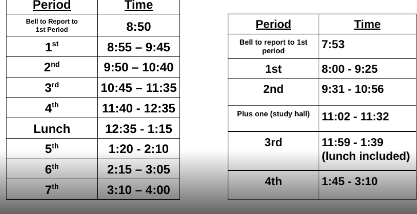
Which works best?
When students decide their classes and schedules, students should consider their long-term goals and what will best serve them throughout their high school career. This approach can help students make choices that align with their academic and personal needs, making them feel more forward-thinking and strategic in their decision-making.
Every place differs. For example, Montgomery County Public Schools use an 8 period schedule compared to Frederick County Public Schools, using a block schedule.
To provide a balanced view, former MCPS, present FCPS student Liam Alberts shares his experience at both Montgomery and Frederick,
Each 4-block and 8-period schedule format has its respective advantages and disadvantages. Block schedules may encourage focused learning and reduced daily stress. By contrast, an 8-period schedule allows continuity and variety but it can be weighty for students and teachers due to a heavier workload and less time.
A 4-block or an 8-period schedule should be implemented depending on several factors, such as the school’s academic goals, student demographics, student needs, and teacher capacity.
The 4-block schedule can be ideal for schools that aim for in-depth learning and focus more on science, arts, and AP courses. This schedule further reduces the number of daily classes that often contribute to pupil stress and transitions.
When students transition from middle to high school, they have to experience a change in schedule. Marco Canzeater (Class of 2026), gives his opinion on this change, “I prefer 4 classes a day because although they are longer, it’s less homework in the end.”
An 8-period schedule might be more appropriate for schools that provide variety and consistency, particularly skill-based subjects. It can also be more effective in supporting students with learning challenges who benefit from daily practice and structure.
These schedules also affect teachers’ workload.
Mrs. Terre Planz gives her view, “I would much rather teach a block schedule as it is easier for students to focus on work and helps teachers stay more organized within the classes they teach.”
Many schools even consider hybrid models which combine elements of block and period schedules to utilize the best of both approaches.
Hybrid models can be adapted to fit specific school needs and ensure that whatever schedule is picked enhances learning and fosters a healthy school atmosphere. This schedule combines period and block together, having 4 blocks one day and a whole different 4 the day after, alternating every other day.
Ultimately, only some schedules fit all schools. Districts may need to experiment and solicit feedback from students, parents, and teachers to find the model that best meets their needs. Regardless of the schedule, ongoing professional development for teachers and support of student well-being must remain top priorities.




















